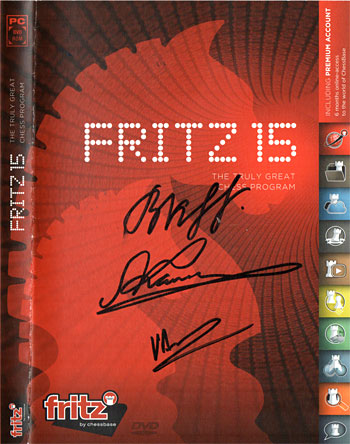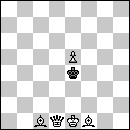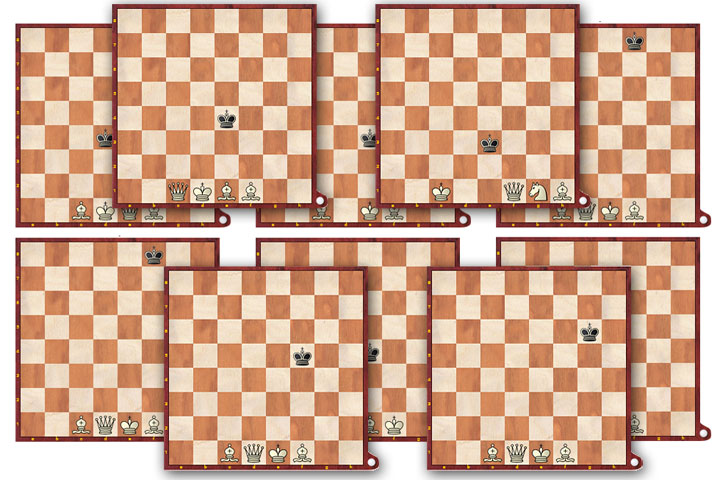Pal Benkö and the Fischer challenge
Pal Benkö published this miniature in the August 1968 issue of Chess Life Magazine:
Years later he recounted the whole story:
When I first started composing chess problems, my interest was mainly directed at compositions that were three moves deep, or longer. One of them was the last problem that I composed as a teenager. It was published many times, because its original setup appealed to problem solvers and tournament players alike. During the Lugano Olympiad (1968), which Bobby Fischer attended, as a spectator, I made a bet with him, that he couldn't solve it in 30 minutes. As time ran out, he became irritated, and demanded to see the answer. When I showed it to him, he insisted that other solutions had to exist. Naturally, this led to another bet! After more time passed, he was forced to settle both wagers.
The teenage Pal Benkö never would have guessed how much mileage he was going to get out of that little composition. While the problem was pleasing on account of its simplicity and charm, Benkö was not satisfied. He pointed out there was a dual on the second move.
Here's the solution, which you can replay against a chess engine in the above diagram:
1.♗c4! ♚f5 (1...♚e5 2.♕d5+ ♚f6 3.♕g5#) 2.♕f3+ (or dual 2.♕h5+ ♚f6 (2...♚e4 3.♕d5#) 3.♕g5#) 2...♚g6 3.♕f7#.
Here's an explanation of this puzzle from IM Lawrence Trent
Lawrence is live most Tuesdays at 16:00 UTC (18:00 CEST / 12 Noon EDT)
Attempted corrections by our readers
When he composed the problem (at fifteen, we remind you) Pal knew that it contained the dual and thought about correcting it. But he was told by experts to "forget about the dual, it is more elegant without additional material." The purity of the position made up for the flaw.
But problemists, fascinated by the position, have been looking for corrections that could make the problem completely dual free. And in our recent article, Pal Benkö and the Fischer challenge, we asked our readers to fire up their chess engines and look for a modification that makes Benkö's problem perfectly dual free. Naturally the position should retain the beauty and elegance of the original, and not change its basic character.
We received many proposals, for which we are very grateful. We have put the most interesting together in the replay diagrams below. Note that you can try to find the solutions by playing for White. The built-in chess engine will reply, until the position is mate — which must happen in three moves.
The positions were selected and checked by problem expert Werner Keym, who gave brief evaluations of each of them. These are to be found in the game viewer at the bottom of this page.
The winner
The best solution submitted by a reader came from Gregor Werner of Worms, Germany. He added a single pawn to Benkö's position and with that eliminated the dual in the second move.
1.♗c4! ♚f5 (1...♔xe5 2.♕d5+ ♚f6 3.♕g5#) 2.♕f3+ (After 2.♕h5+ Because of the white pawn on e5 the black king cannot move to f6, and after 2...♚e4 White cannot play 3.♕d5#) 2...♚g6 (2...♚xe5 3.♕f4#) 3.♕f7#.
 We need to mention here that the Gregor Werner version is not perfect — it contains a minor flaw in final position of the main line given above. This mate after 3.♕f7 is not "clean" — the flight square f6 is covered by two pieces. Problemists frown on that. Still, the problem retains the elegance of Benko's original problem, with the pawn added on the most appropriate, symmetrical square.
We need to mention here that the Gregor Werner version is not perfect — it contains a minor flaw in final position of the main line given above. This mate after 3.♕f7 is not "clean" — the flight square f6 is covered by two pieces. Problemists frown on that. Still, the problem retains the elegance of Benko's original problem, with the pawn added on the most appropriate, symmetrical square.
Congratulations Gregor, you get the prize, which is a ChessBase software program signed by three former World Champions: Vladimir Kramnik, Anatoly Karpov and Viswanathan Anand.
 A second note: Gregor Werner's modification — adding a white pawn on e5 — was not the first time I saw this done. Exactly the same position (right) was sent to me by Werner Keym on June 24th, 2019. In his email he wrote:
A second note: Gregor Werner's modification — adding a white pawn on e5 — was not the first time I saw this done. Exactly the same position (right) was sent to me by Werner Keym on June 24th, 2019. In his email he wrote:
I have just discovered that adding a white pawn on e5 to Benko's famous three-mover eliminates the dual in the second move. It also does not harm the aesthetic value of the problem.
And that email was the reason I wrote the original article.
There is one more chapter to the saga of Pál Benkö's famous three-mover. A number of professional composers have tried to "cure" it of the dual, but it was Benkö himself who came up with a most appealing modification. But we leave that to the third and final part of the series.
Replay all submissions
Links


















 We need to mention here that the Gregor Werner version is not perfect — it contains a minor flaw in final position of the main line given above. This mate after 3.♕f7 is not "clean" — the flight square f6 is covered by two pieces. Problemists frown on that. Still, the problem retains the elegance of Benko's original problem, with the pawn added on the most appropriate, symmetrical square.
We need to mention here that the Gregor Werner version is not perfect — it contains a minor flaw in final position of the main line given above. This mate after 3.♕f7 is not "clean" — the flight square f6 is covered by two pieces. Problemists frown on that. Still, the problem retains the elegance of Benko's original problem, with the pawn added on the most appropriate, symmetrical square. A second note: Gregor Werner's modification — adding a white pawn on e5 — was not the first time I saw this done. Exactly the same position (right) was sent to me by Werner Keym on June 24th, 2019. In his email he wrote:
A second note: Gregor Werner's modification — adding a white pawn on e5 — was not the first time I saw this done. Exactly the same position (right) was sent to me by Werner Keym on June 24th, 2019. In his email he wrote:





